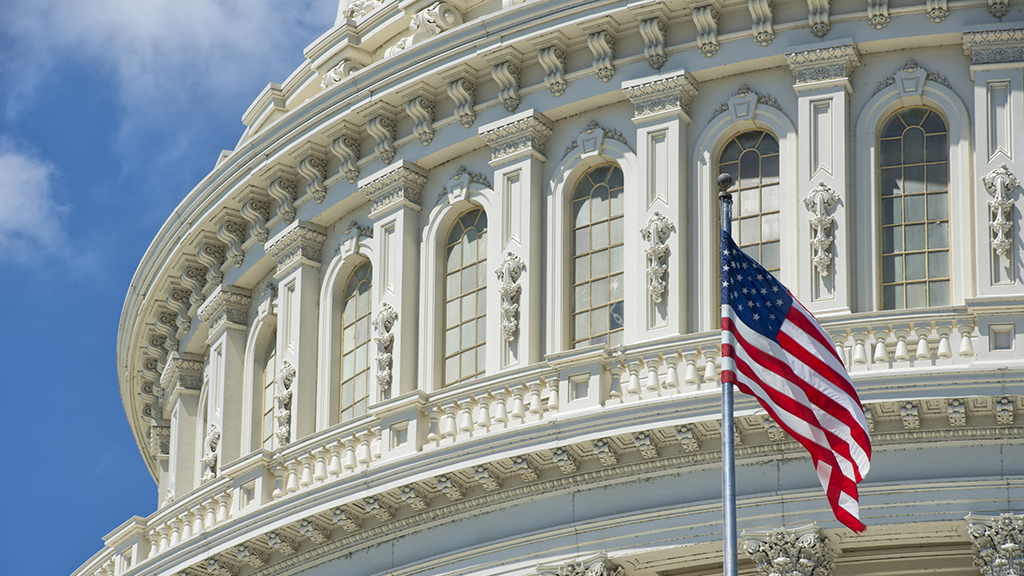Legislative Update
Education Funding Under the American Rescue Plan
By Jodi Peterson
Posted on 2021-03-12

Disclaimer: The views expressed in this blog post are those of the author(s) and do not necessarily reflect the official position of the National Science Teaching Association (NSTA).
The Senate passed their version of the American Rescue Plan (ARP) last weekend. The $1.9 trillion relief package is latest stimulus plan (two additional plans passed last year), and was completed via the budget reconciliation process, which allows the Senate to circumvent the 60 vote filibuster threshold and pass the bill with a simple majority. The bill eventually passed without a single Republican vote before it went back to the House of Representatives, where is passed on March 10. President Biden is expected to sign the bill by Friday March 12.
The bill provides $170 billion for the Department of Education; this includes $125.8 billion in funding for K-12 through the Elementary and Secondary School Emergency Relief (ESSER).
Similar to other COVID relief bills, ESSER funding will flow to each State based on its share of Title I funding for FY 2021.
87.5% of funding must go to districts. The bulk of the funding can be used for services allowable under federal education laws including ESSA, IDEA, Perkins CTE and other major existing education laws.
Districts must use at least 20% of the grant funds to address learning loss via the implementation of evidence-based interventions that respond to students’ academic, social, and emotional needs and address disparate impacts on student subgroups. Examples of interventions in the law include summer learning/enrichment, comprehensive afterschool programs, and extended school day and year. Money can also be used for cleaning, for educational services while schools are closed, to buy education technology and connectivity, and for school repairs and improvements to lower the risk of the virus, similar to the last stimulus bill.
The bill requires State Education Agencies (SEAs) to reserve at least 5 percent (estimated to be about $6.25 billion nationally) of new ESSER III allocations for grants and contracts to carry out activities to promote learning recovery.
SEAs must reserve at least 1% to provide evidence-based summer enrichment programs; and at least 1% to provide evidence-based comprehensive afterschool programs. SEAs are also required to set aside 2.5% for education technology.
The ESSER Fund includes several equity provisions not incorporated into prior K-12 stimulus funds. States must reserve specific dollar amounts to support each category of support for LEAs and to ensure they respond to both disparate impacts and students’ academic, social, and emotional needs. Each state is subject to an additional Maintenance of Equity requirement. In addition the Senate bill includes funding for private schools.
The bill also provides funding for:
- Emergency Connectivity Fund (E-Rate Program) ($7.27 billion) available through September 2030 through the Federal Communications Commission’s (FCC) E-Rate program to address the “homework gap.” The Emergency Connectivity Fund will allow eligible schools or libraries to buy devices (WiFi hotspots, routers, etc.) or provide connectivity for students and staff and library patrons.
- Coronavirus State and Local Fiscal Recovery Funds (i.e., State, territorial, tribal, and local fiscal relief ($350 billion)
- Child Care and Development Block Grant (CCDBG) ($39 billion)
- Head Start ($1 billion)
More information on the bill, including state allocations, can be found here.
Cardona Confirmed by U.S Senate as ED Secretary
Dr. Miguel Cardona was confirmed last week by the Senate as the new U.S. Secretary of Education by a vote of 64-33.
In a March 3 letter from Secretary Cardona, he writes “Our top priority in the coming months must be to work together to safely reopen all schools for in-person learning, beginning with children in grades K-8. The data, and daily experience, show our children need us to find a way to take this step. My career experiences have taught me that education is primarily a state and local endeavor, and I know students, educators, administrators, staff, and families have performed heroically under these difficult circumstances to take steps toward reopening and to support students wherever they are learning. From a federal perspective, our role is to provide support, guidance, and directions on how to do it safely.”
The letter also included links to the recently released COVID-19 Handbook Volume 1: Strategies for Safely Reopening Elementary and Secondary Schools, to help implement the Centers for Disease Control and Prevention’s K-12 operational strategy. A second volume is being developed to provide schools with practical implementation plans to address the extraordinary disruption created by COVID-19 for students, educators, and parents — especially for historically underserved students and communities that have been hit hardest by the pandemic.
Prioritizing Vaccinations for School Staff
Also last week the Department of Education sent a letter stating the Federal Retail Pharmacy Program is prioritizing vaccinations for school staff and child care workers during the month of March. Teachers and staff in pre-K through 12 schools and childcare programs will be able to sign up for an appointment at over 9,000 pharmacy locations participating in the federal program nationwide. The letter included links to two CDC resources:
- The COVID-19 Vaccine Toolkit for School Settings and Childcare Programs
- Teachers, School Staff, and Childcare Workers: How to Get Vaccinated.
Jodi Peterson is the Assistant Executive Director of Communications, Legislative & Public Affairs for the National Science Teaching Association (NSTA) and Chair of the STEM Education Coalition. Reach her via e-mail at jpeterson@nsta.org or via Twitter at @stemedadvocate.
The mission of NSTA is to promote excellence and innovation in science teaching and learning for all.


